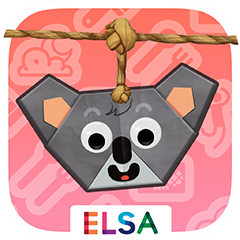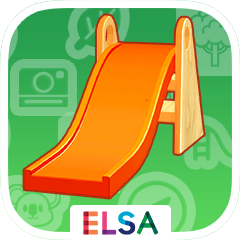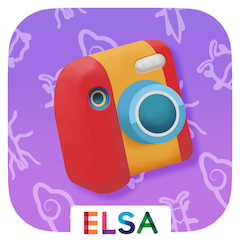The Early Learning STEM Australia (ELSA) program has been developed by SPLAT-maths to align with outcomes from the Early Years Learning Framework (EYLF). Each activity in our ELSA children’s apps maps to at least one Outcome from the EYLF.
Below we have indicated the EYLF outcomes that align to each ELSA app.
However, if you would prefer a printable list of EYLF outcomes that are covered by the ELSA program, you can download this PDF:
App 1: Patterns and Relationships
The Experience, Represent, Apply (ERA) activities in Patterns and Relationships are aligned to outcomes from the Early Years Learning Framework. Activities in Patterns and Relationships align mainly with Outcomes 1, 4 and 5.

Early Years Learning Framework (EYLF)
Outcome 1 – Children have a strong sense of identity
- Children develop their emerging autonomy, inter-dependence, resilience and sense of agency.
- Children learn to interact in relation to others with care, empathy and respect.
Outcome 4 – Children are confident and involved learners
- Children develop dispositions for learning such as curiosity, cooperation, confidence, creativity, commitment, enthusiasm, persistence, imagination and reflexivity.
- Children develop a range of skills and processes such as problem solving, inquiry, experimentation, hypothesising, researching and investigating.
Outcome 5 – Children are effective communicators
- Children interact verbally and non-verbally with others for a range of purposes.
- Children express ideas and make meaning using a range of media.
- Children use information and communication technologies.
App 2: Location and Arrangement
The Experience, Represent, Apply (ERA) activities in Location and Arrangement are aligned to outcomes from the Early Years Learning Framework (EYLF). Activities in Location and Arrangement align mainly with Outcomes 1, 2, 4 and 5.

Early Years Learning Framework (EYLF)
Outcome 1 – Children have a strong sense of identity
- Children develop their emerging autonomy, inter-dependence, resilience and sense of agency.
- Children learn to interact in relation to others with care, empathy and respect.
Outcome 2 – Children are connected with and contribute to their world
- Children develop a sense of belonging to groups and communities and an understanding of the reciprocal rights and responsibilities necessary for active community participation.
- Children become aware of fairness.
Outcome 4 – Children are confident and involved learners
- Children develop dispositions for learning such as curiosity, cooperation, confidence, creativity, commitment, enthusiasm, persistence, imagination and reflexivity.
- Children develop a range of skills and processes such as problem solving, inquiry, experimentation, hypothesising, researching and investigating.
Outcome 5 – Children are effective communicators
- Children interact verbally and non-verbally with others for a range of purposes.
- Children express ideas and make meaning using a range of media.
- Children use information and communication technologies.
App 3: Representations
The Experience, Represent, Apply (ERA) activities in Representations are aligned to outcomes from the Early Years Learning Framework (EYLF). Activities in Representations align mainly with Outcomes 1, 2, 4 and 5.

Early Years Learning Framework (EYLF)
Outcome 1 – Children have a strong sense of identity
- Children develop their emerging autonomy, inter-dependence, resilience and sense of agency.
- Children learn to interact in relation to others with care, empathy and respect.
Outcome 3 – Children have a strong sense of wellbeing
- Children become strong in their social and emotional wellbeing.
- Children take increasing responsibility for their own health and physical wellbeing.
Outcome 4 – Children are confident and involved learners
- Children develop dispositions for learning such as curiosity, cooperation, confidence, creativity, commitment, enthusiasm, persistence, imagination and reflexivity.
- Children develop a range of skills and processes such as problem solving, inquiry, experimentation, hypothesising, researching and investigating.
Outcome 5 – Children are effective communicators
- Children interact verbally and non-verbally with others for a range of purposes.
- Children express ideas and make meaning using a range of media.
- Children use information and communication technologies.
App 4: Investigations
The Experience, Represent, Apply activities in Investigations are aligned to outcomes from the Early Years Learning Framework (EYLF). Activities in Investigations primarily align with:

Early Years Learning Framework (EYLF)
Outcome 1 – Children have a strong sense of identity
- Children develop their emerging autonomy, inter-dependence, resilience and sense of agency.
- Children learn to interact in relation to others with care, empathy and respect.
Outcome 2 – Children are connected with and contribute to their world
- Children develop a sense of belonging to groups and communities and an understanding of the reciprocal rights and responsibilities necessary for active community participation.
- Children become socially responsible and show respect for the environment.
Outcome 4 – Children are confident and involved learners
- Children develop dispositions for learning such as curiosity, cooperation, confidence, creativity, commitment, enthusiasm, persistence, imagination and reflexivity.
- Children develop a range of skills and processes such as problem solving, inquiry, experimentation, hypothesising, researching and investigating.
- Children resource their own learning through connecting with people, place, technologies and natural and processed materials.
Outcome 5 – Children are effective communicators
- Children interact verbally and non-verbally with others for a range of purposes.
- Children use information and communication technologies to access information, investigate ideas and represent their thinking.
